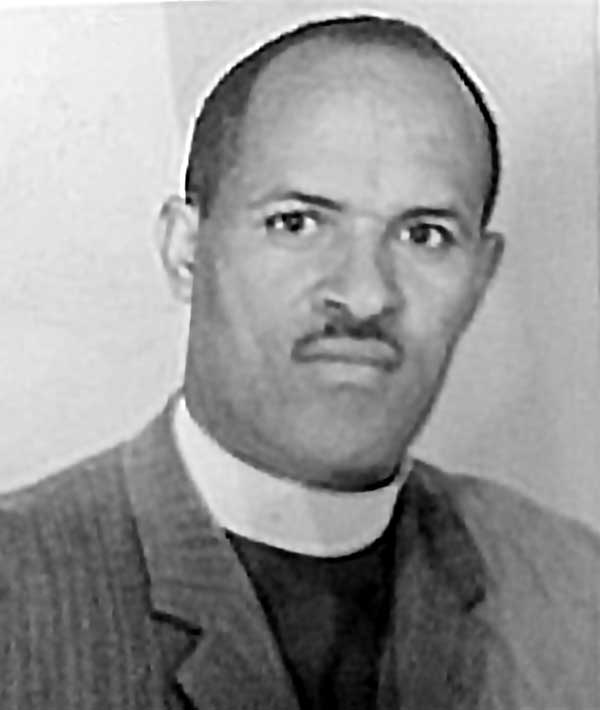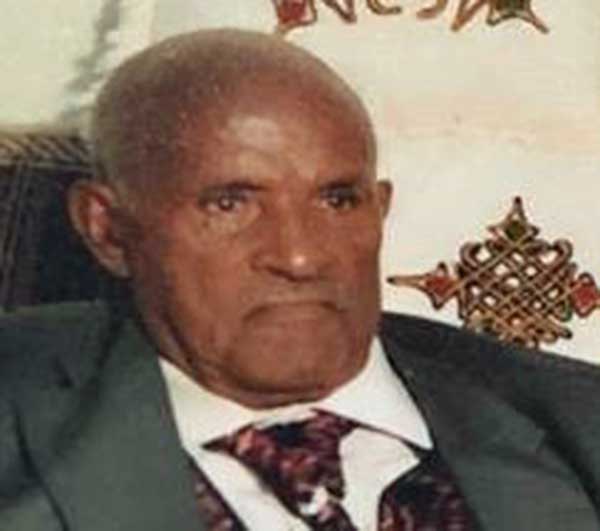Lamessa Bato Eba (Qubee: Lammeessaa Batoo) was born in Aira, Wallaga (Western Oromia) in 1932. Through the missionaries who worked in his area, Lamessa was exposed to German and Swedish hymnals. He learned to play the organ and the trumpet. Having worked as a professional carpenter for some years, Lamessa began his ministry as a church planter and pastor in Western Wollega. He received his ministerial formation at Mendi Bible School and during the pastoral training course in Najo from 1955-58.
Rev. Lamessa travelled throughout Western Wallaga, singing western hymnals and Oromo gospel songs in traditional tunes and styles. Frequently, he played the trumpet in market places to attract the attention of the local people, with whom he later shared the gospel in words and songs. Typical to the Oromo singing style, he usually asked his hearers to repeat after him lines from his song.
Rev. Lamessa Bato studied theology at Diploma level at Mekane Yesus Seminary from 1966-70. His transition into full-time pastorate at the Entotto Mekane Yesus congregation in 1969 brought a conclusion to his singing ministry as an itinerant singer. After joining the Addis Ababa Synod as the Evangelistic Outreach Coordinator, he utilized the cassette ministry of the synod to engage the Oromos of Northern Shawa (North Oromia) through indigenous Oromo songs.
Rev. Lamessa Bato pioneered the composition of indigenous Oromo spiritual songs and published them under the title Sagallee Lubbuu Galata Waaqayyof (‘The Voice of the Soul, Praising God’). This songbook includes the popular confession song, based on Psalm 51 (both in Afaan Oromo and Amharic), “Namaar Ya Waaq Uumaakoo/ ማረኝ አቤቱ ፈጣሪዬ እኔም አውቄአለሁ በደሌን”, is included to later find its rightful place in the Book of Liturgy of the Ethiopian Evangelical Church Mekane Yesus.
Rev. Lamessa faced challenges and criticisms, first from his seminary professors and later church leaders who discouraged his initiative of introducing the indigenous Oromo tunes and style of singing into the Oromo Lutheran worship. His continued effort, however, paid off eventually as his typewritten paperback hymnbook got published in 1970 as the first Oromo indigenous songbook (unlike the Oromo hymnal that Onesimus Nasib translated from the Swedish Evangelical Mission hymnal in the late 19th century).
Rev. Lamessa passed away on July 5, 2018.
Songs in hymn books
Sagallee Lubbuu Galata Waaqayyof (ed. Lamessa Bato, 1970)
- Oromo songs: No. 2, 4, 9, 12, 15, 19, 21, 22, 23, 26, 28
- Amharic songs: No. 3, 6, 25, 29, 33
Macaafa Farfannaa: Galata Waaqayyoo (1998)
- No. 32, 53; 165 (?)
Pictures


» See also picture of second pastoral training course at Najo
in Bakke (1987), Christian Ministry, p. 153.
Further readings
Bakke, Johnny. Christian Ministry: Patterns and Functions within the Ethiopian Evangelical Church Mekane Yesus (Studia Missionalia Upsaliensia 44). Oslo: Solum Forlag; New Jersey: Humanities Press, 1987.
Magarsaa Guutaa. From a Humble Beginning to Advanced Standing: A History of Mekane Yesus Seminary [1960-2010]. Addis Ababa: Mekane Yesus Seminary, 2011. [View online version]
Nilsson, Marianne. “Spreading the Gospel in Vernacular Languages: Hymn Translation, Composition and Circulation in Eritrea and Ethiopia”, in forthcoming book on Ethiopian Gospel Music (working title).
Q: Any article in a Christian magazine?
Seminary paper, etc.?